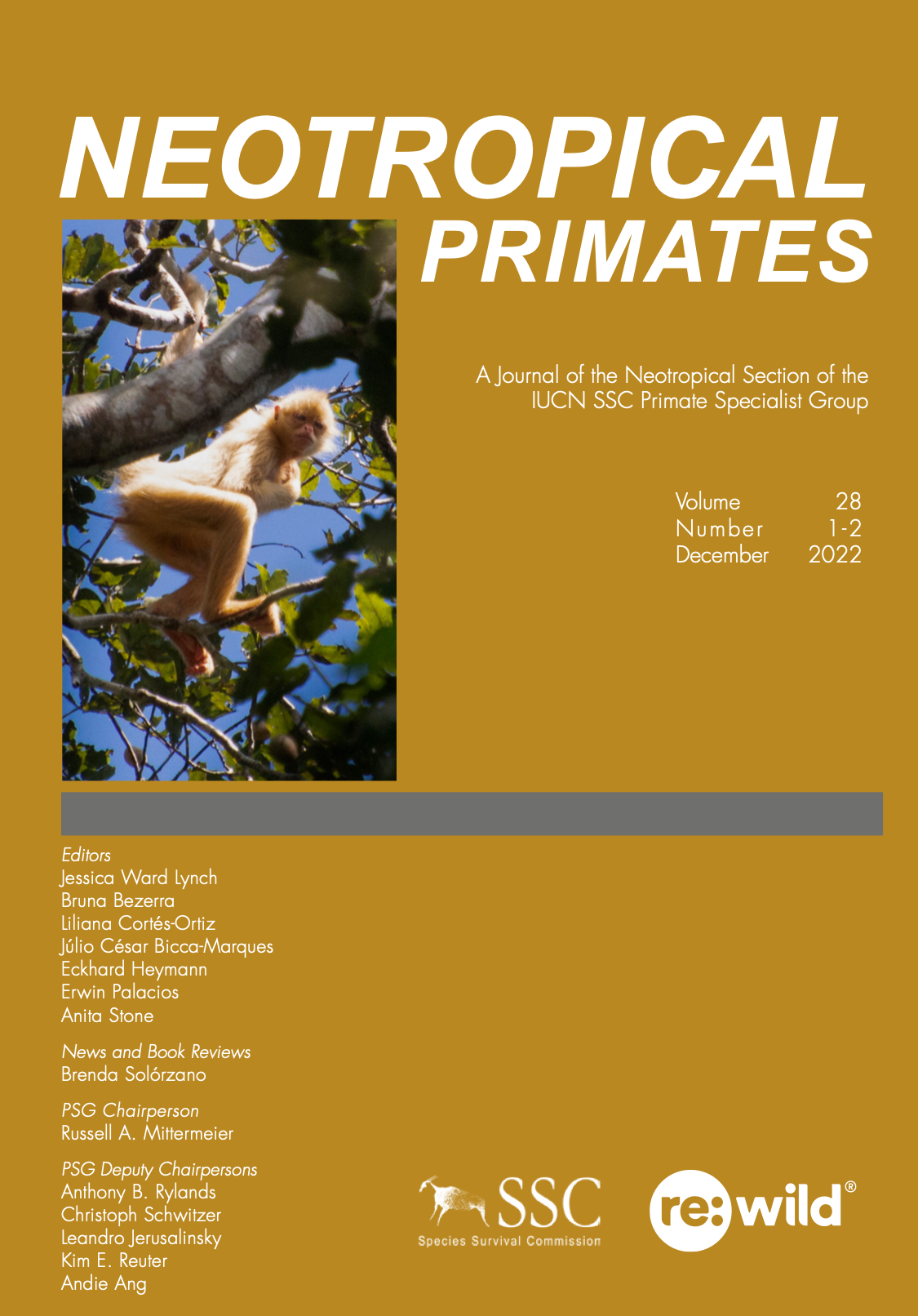Observations of golden-mantled tamarins (Leontocebus tripartitus) in Amazonian Ecuador
DOI:
https://doi.org/10.62015/np.2022.v28.229Keywords:
Golden-mantled tamarins, home range, intergroup encounters, sleep sites, anti-predator behaviorAbstract
Golden-mantled tamarins (Leontocebus tripartitus) are an understudied callitrichid primate whose geographic range extends from the Río Napo and Río Curaray in Perú into eastern Ecuador. Only one behavioral study of this species has been published to date, which focused on the population overlapping the Tiputini Biodiversity Station in Amazonian Ecuador over two decades ago. We reevaluated this same population via a two-month preliminary assessment of demography, ranging patterns, and behavior. We located five groups within a roughly 1 km radius of the station, with group sizes ranging from approximately 5 to 11 individuals. Most groups were unhabituated to human presence, but for one group that was well habituated we collected ranging and behavioral data over approximately 101 follow-hours. The group had a mean daily path length of 1,483 m and home range estimates of 25.9 to 39.9 ha, depending on the method used. Intergroup encounters occurred at a rate of 0.08 per follow hour. Group members exhibited substantial variation in cohesion, with individuals routinely traveling, foraging, and sleeping up to 40 m apart. We observed repeated use of several sleep sites as well as the use of a tree hole as a sleep site (the first recorded use for this species) and documented rapid-avoidance and mobbing anti-predator behaviors. These data suggest substantial changes to the Tiputini golden-mantled tamarin population and provide much needed information on callitrichids from the western Amazon, furthering our understanding of variation in socioecology across the callitrichid radiation overall.
Downloads
Published
Issue
Section
License

This work is licensed under a Creative Commons Attribution-NonCommercial-ShareAlike 4.0 International License.



